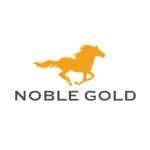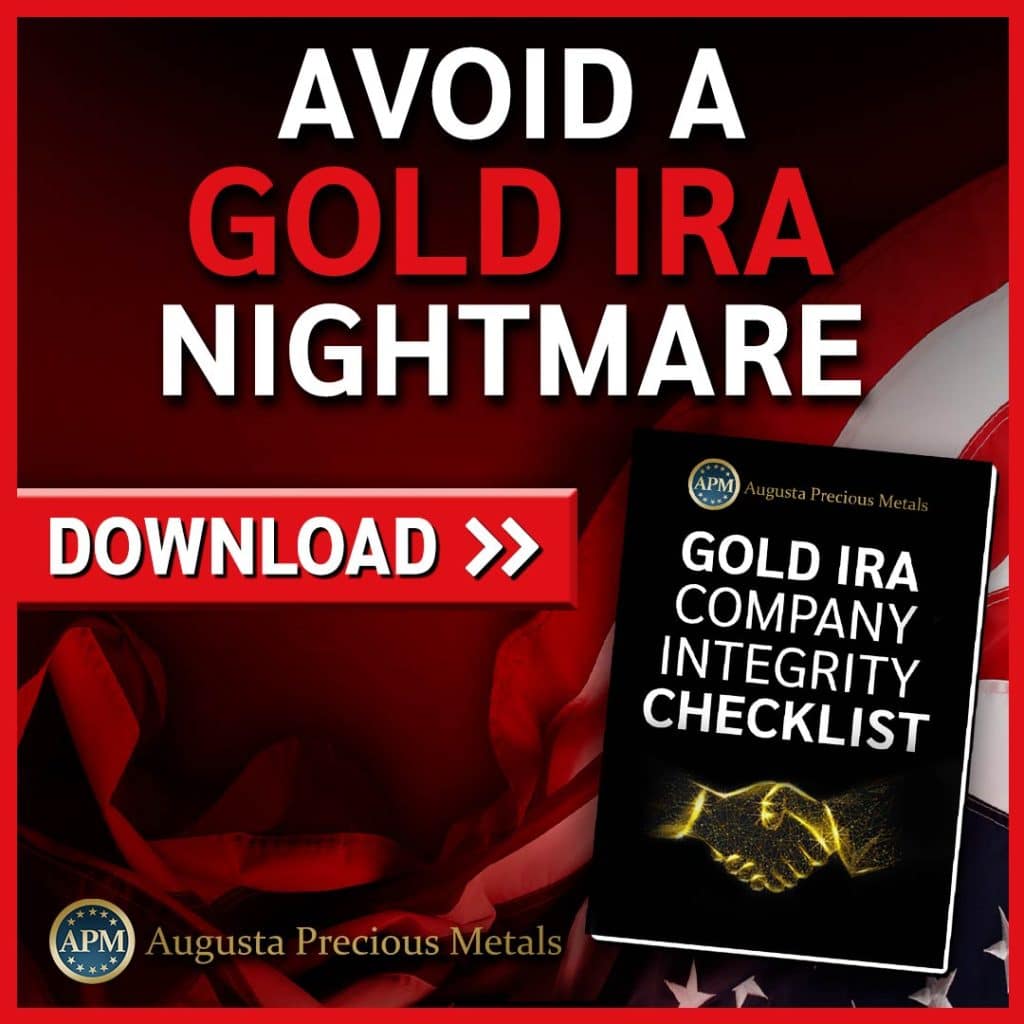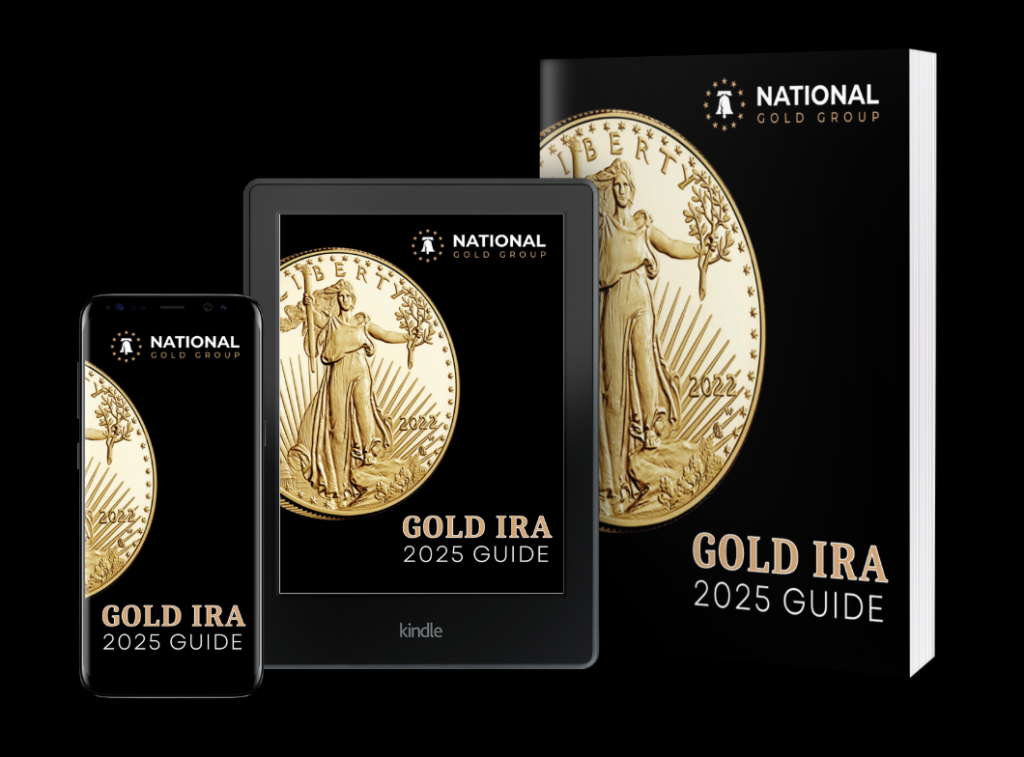Gold Prices and Interest Rates Relationship

“As the saying goes, ‘what goes up must come down.’ This adage is often applied to the relationship between gold prices and interest rates. You might’ve heard that when interest rates climb, gold prices tend to decrease. But is it really that simple? Not necessarily.
We will cover the standard negative correlation and compare it to the new paradigm that has shifted this correlation starting in the autumn of 2022. Be sure to read until the very end to gain a full understanding
The standard analysis and market expectation is that when interest rates climb, gold prices tend to decrease. Therefore, an inverse relationship exists, but not always. To better understand the relationship between the gold prices and interest rates we will cover the following points:
- Understanding Interest Rates and Gold Prices
- Recent Trends and Influencing Factors
- Impact of Rising Interest Rates
- Effects of Falling Interest Rates
- Strategic Investment Considerations
Over the course of this article, we’ll sift through historical data, economic theories, and investor psychology to see if this widely-held belief holds water. By the end, you’ll have a better grasp on how these two seemingly disparate elements of the financial world interact, which could prove invaluable in your future investment decisions. Ready to embark on this illuminating journey?”

Understanding Interest Rates and Gold Prices
To understand the relationship between interest rates and gold prices, it’s crucial to grasp that gold prices do not solely depend on interest rates, but are influenced by a combination of factors including demand, supply, and currency impact. Gold prices exist in a complex ecosystem and are sensitive to a multitude of variables. For instance, if interest rates increase, the yield on assets such as bonds becomes more attractive to investors, which could decrease the demand for gold and subsequently its price.
However, this isn’t a hard-and-fast rule. There are instances where gold prices have ascended in spite of rising interest rates. One explanation for this could be that the rate of inflation is perceived to be higher than the increase in interest rates, leading to currency devaluation. In such scenarios, gold, often seen as a hedge against inflation, becomes appealing and hence its price could increase.
Let’s also remember that market sentiment and global events can have a more profound impact on gold prices than interest rates alone. For instance, during periods of economic uncertainty or geopolitical unrest, investors often flock to safe-haven assets like gold, pushing its price upwards regardless of interest rates.
Recent Trends and Influencing Factors
While understanding the broad factors influencing gold prices is crucial, it’s equally important to examine recent trends and the impact of specific events on the precious metal’s value. Lately, gold prices have shown a tendency to defy traditional economic theory. For instance, they’ve sometimes increased even when interest rates rose, contradicting the common belief of a direct inverse relationship.
The reality is, gold prices are influenced by a multitude of factors:
- Market sentiment and fear of a global recession
- Anticipation of inflation
- Geopolitical risks
- Performance of the stock market
- Major economic or political events
These factors can sometimes overshadow the impact of interest rates on gold prices. Remember that gold is often seen as a safe-haven asset. So, in times of political or economic uncertainty, demand for gold might surge, pushing prices up, irrespective of interest rates.
Moreover, the correlation between interest rates and gold prices isn’t as straightforward as it seems. Higher interest rates may make yield-bearing assets more attractive, potentially putting pressure on gold prices. However, if rates don’t keep pace with inflation, gold prices can rise due to their status as an inflation hedge.
Gold is a valuable commodity and needs to be authenticated and sourced in a transparent manner. A long-established and trusted gold investment company can provide guidance in navigating the present markets and assisting in investment timing.
A tax-advantaged means of owning physical gold without the need or liability of storing the precious metal in your residence is a gold IRA. Gold IRA companies provide investors with competitive pricing, a reasonable buyback guarantee, lifetime customer support, and secure storage of their gold and silver.
To learn more about how gold investing can protect your long-term wealth and the advantages of tax-deferred gold IRAs, click the banner below to access and download Augusta Precious Metals’ gold IRA checklist to make sure you are aware of all aspects of the gold IRA process:
Impact of Rising Interest Rates
When interest rates climb, it’s common to see a dip in gold prices due to the increased appeal of yield-bearing assets. But remember, it’s not always a straightforward relationship.
To understand why, consider this: higher interest rates make bonds and savings accounts more attractive as they yield more. This increased demand often leads to investors shifting their money from non-interest-bearing assets, like gold, to these yield-bearing ones, causing a drop in gold prices. Historical data confirms this trend.
However, it’s important to note that other factors can offset the impact of rising rates. For instance, if inflation is anticipated to outpace the increase in interest rates, gold’s appeal as a hedge against inflation could trigger a rise in its price. Similarly, in times of geopolitical instability or economic uncertainty, investors often flock to gold as a ‘safe haven’, propping up its price.
Let’s also consider the currency effect. Gold is priced in U.S. dollars and a rise in interest rates typically strengthens the dollar. A stronger dollar makes gold more expensive for foreign buyers, potentially dampening demand and putting downward pressure on prices.
One of the most notable historical exceptions to this inverse correlation was the stagflation era of the 1970s where the Federal Reserve hiked rates at an extremely aggressive pace. From 1971 to 1980, gold’s value increased 2,200% in those 9 years. To re-iterate, the inverse correlation is not a hard-and-fast rule.
Effects of Falling Interest Rates
Just as rising interest rates can exert pressure on gold prices, a reduction in these rates also has significant implications for the precious metal’s value. When interest rates fall, gold often becomes more attractive to investors. This is because lower rates decrease the opportunity cost of holding non-yielding assets like gold.
Here are some effects of falling interest rates on gold prices:
- Enhanced Appeal: Lower rates make non-yielding gold more attractive. Investors may shift their money into gold as it becomes a more viable investment compared to other assets.
- Increased Demand: As the appeal of gold increases, so does its demand. High demand often leads to an increase in the price of gold.
- Inflation Perception: If rates fall due to fears of inflation, gold’s reputation as an inflation hedge can drive up its price.
- Investor Sentiment: The reasons behind rate cuts can influence investor sentiment. For instance, if rates are cut due to economic weakness, this can increase risk aversion and boost gold’s safe-haven appeal.
- Anticipated Cuts: Gold prices often react strongly to anticipated rate cuts. Investors might buy gold ahead of expected cuts, leading to price increases.
Best Gold IRA for Low Investment Minimums. Click the Banner Below to Get Started
Gold Prices and Real Rates Today. A Broken Correlation
Before the autumn of 2022, the rise of real interest rates and gold prices typically had a negative correlation. This correlation has now been challenged concerning the present economic milieu.
What changed exactly? According to macroeconomic expert Luke Gromen, as well as others, the US debt and fiscal position is beyond the tipping point where the interest on the US national debt alone, nearly $1 trillion, is unserviceable.
According to Gromen, once the US fiscal accounting hit 120% debt-to-GPD threshold and 7% fiscal GDP deficits, this negative correlation between real 10-year interest rates and the price of gold broke.
Unless the US government cuts the largest parts of the federal budget, either entitlement programs or military spending by 20 – 25%, the end effect of this ever-expanding debt is inflationary.
The US government indicates no intent to cut either expense, resulting in the negative correction between real rates and gold prices becoming effectively decoupled.
In this era of fiscal dominance, , the present high interest rates on the US National debt are inflationary, as well as, the scenario of lower rates with the increase in the money supply due to the inevitable quantitative easing. Both situations are now effectively good for the dollar price of gold.
Strategic Investment Considerations
In light of these insights on gold prices and interest rates, it’s crucial to consider several strategic factors when looking to invest in precious metals. You must be aware that gold prices are influenced by a myriad of elements beyond interest rates, such as geopolitical risks, inflation anticipation, and market sentiment.
Determine your risk tolerance and investment horizon. These personal factors significantly shape your investment strategy. For instance, if you can tolerate high risk and have a long-term investment horizon, you might benefit from the potential long-term appreciation of gold, despite short-term volatility.
Keep a keen eye on central bank activities. Rate hikes often provide opportune moments to establish or increase gold positions. Conversely, rate cuts can make non-yielding gold more appealing to investors seeking returns.
Consider using the dollar-cost averaging strategy to smooth out price volatility. This involves investing a fixed amount at regular intervals, regardless of the gold price. Over time, this approach can reduce the impact of price swings.
Moreover, stay informed about macroeconomic conditions. This includes understanding the reasons behind rate cuts, as they can influence investor perceptions and gold prices. For example, rate cuts aimed at controlling inflation might decrease gold’s appeal as an inflation hedge if effective.
Investing in physical gold and precious metals provides more control and less on the downside counterparty risk to owning gold ETFs, futures contracts, or other digital forms of what could be termed as ‘paper gold’. Finding a reputable gold investment company that studies and actively monitors the present economic cycles, central bank policy changes, the movements of the markets as well as the providing fundamental and technical analysis can eliminate a great deal of the guesswork and risk.
Furthermore, these companies can provide serious gold investors access to competitive prices, transparency, a sound buyback policy, reliable customer service, and robust security protection of their precious metal investments.
Choosing the right gold IRA company will depend on one’s unique investing needs. Depending on whether you are a high-net investor looking for the most competitive prices or require a lower investment minimum and affordable entry to the gold market, we have researched and reviewed our best 4 gold IRA and precious metal investment companies that meet those individual needs. In addition to a gold IRA, owning the physical gold in your place of residence is also an option. We have provided links to these companies at the bottom of this article for your convenience.
To learn more about the advantages of tax-deferred gold IRAs right now, click the banner below to access and download Augusta Precious Metals’ gold IRA checklist to make sure you are aware of all aspects of the gold IRA process:
Conclusion
In conclusion, the relationship between gold prices and interest rates isn’t as cut-and-dried as you might think. Various factors, beyond interest rates, influence gold prices including economic and political events. Higher interest rates can dent gold’s allure, but falling rates aren’t a guaranteed boost either.
Factors like inflation, geopolitical events, market speculation and the present decoupling of this inverse correlation due to the massive amount of US national debt hold sway.
Understanding these dynamics can help shape your investment strategies. Remember, in a fluctuating economic landscape, keeping an analytical eye on trends and factors is key to successful investing.
If you have 100k in savings to protect and want to take advantage of the best gold prices and lifetime customer support, attend a free gold and silver educational web conference hosted by Augusta Precious Metals. Secure your place today by clicking the banner below.
If you have 100k in savings to protect, attend a gold investment educational webinar hosted by Augusta Precious Metals. Click the button below:
Obtain a gold IRA guide and talk to a broker




Gold IRA FAQs

Adam ONeill
Author, lifelong investor, and creator of PreciousMetalsInvestmentPortfolio.com



